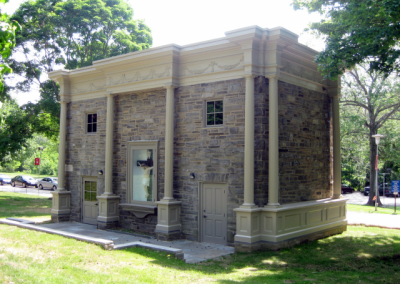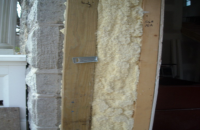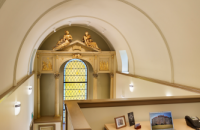
The Sisters of Saint Joseph Earth Center hopes to model ways of living in harmony with all of creation.
The "Green" Renovation
In renovating the House of Loreto Chapel, the Sisters of Saint Joseph used an already existing stone building which is the first step in “green” construction. Reusing the structure prevents unnecessary waste. The original beautiful oak floor was restored. The stain glass window was removed, restored and replaced where it allows sunlight to stream into the building. The original “reredos,” the altarpiece flown here from Loreto, Italy, was cleaned and placed above the Black Madonna against the wall. The Statue of the Black Madonna was restored by the people of St. Athanasius/Immaculate Conception Parish and placed on the shrine-like shelf where it can be honored and viewed with the Center. The roof, although too shaded for solar panels, was painted white to reflect the sun and to help to keep the building cooler in the summer. The floor that was laid in the loft is made of pure oak and was not removed from rainforests.










